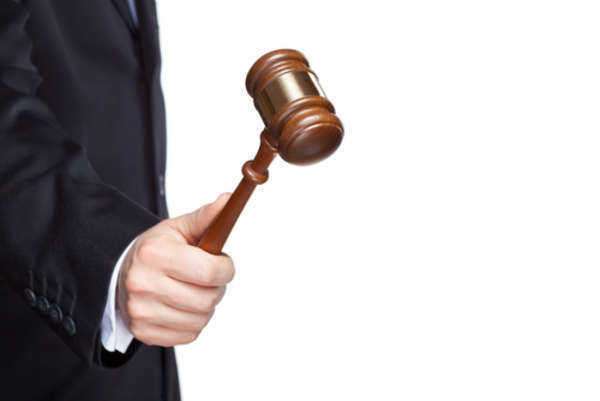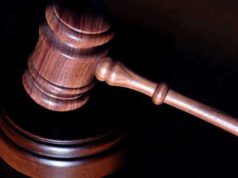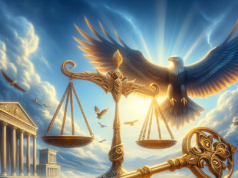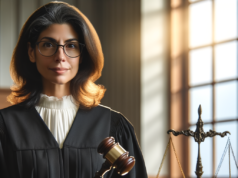Table of Contents

Schenck v. United States: A Landmark Supreme Court Case Shaping Freedom of Speech
Introduction
The First Amendment of the United States Constitution, which guarantees the freedom of speech, is one of the cornerstones of American democracy. However, the extent to which this right can be exercised has been a subject of intense debate and numerous legal challenges throughout the nation’s history. One of the most significant cases that helped define the boundaries of free speech in the United States is Schenck v. United States.
Schenck v. United States, decided in 1919, marked a crucial turning point in the interpretation of the First Amendment. This landmark Supreme Court case involved issues related to freedom of speech during times of war, and its ruling had a profound and lasting impact on the way the United States balances national security concerns with individual rights. In this article, we will explore the historical context, facts, legal arguments, and the lasting legacy of Schenck v. United States.
I. Historical Context
To fully understand the significance of Schenck v. United States, it’s essential to consider the historical context in which it unfolded. The case took place during World War I, a time when the United States was deeply involved in the global conflict. The war brought about significant social and political changes in the country, including an increased emphasis on national loyalty and security.
The United States was in the throes of the First Red Scare, a period of intense anti-communist and anti-radical sentiment. The Russian Revolution of 1917 had raised concerns about the spread of radical ideas, leading to a heightened fear of political dissent and perceived threats to the government. In response to these fears, the U.S. government implemented measures to suppress dissent and bolster national unity.
One such measure was the Espionage Act of 1917, which made it a crime to interfere with the draft or obstruct military recruitment, among other things. This law set the stage for the legal challenge that would ultimately lead to the Schenck case.
II. The Facts of Schenck v. United States
The case of Schenck v. United States revolved around Charles T. Schenck, the general secretary of the Socialist Party of America. Schenck and his colleagues distributed pamphlets to potential draftees during World War I. These pamphlets urged men to resist the draft and argued that the conscription process violated their rights. The key question in the case was whether Schenck’s actions constituted a form of speech protected by the First Amendment or if they posed a clear and present danger to the nation’s security.
Schenck’s pamphlets contained strong language, including phrases like “Assert your rights” and “Do not submit to intimidation.” The government argued that these pamphlets encouraged insubordination and obstructed the war effort, thereby presenting a clear and present danger. Schenck, along with co-defendant Elizabeth Baer, was charged with violating the Espionage Act.
III. Legal Arguments
Schenck and Baer’s case was heard by the United States Supreme Court, where they raised several legal arguments in their defense. The central issue at hand was whether their actions constituted protected speech under the First Amendment. The Court’s decision would establish a precedent for determining the limits of free speech during wartime.
1. Freedom of Speech: Schenck’s defense argued that his actions were protected by the First Amendment’s guarantee of freedom of speech. They contended that distributing pamphlets expressing his anti-draft views was a legitimate exercise of his right to free speech and did not pose a clear and present danger to national security.
2. Clear and Present Danger Test: The government, on the other hand, relied on the “clear and present danger” test established in the landmark case of Schenck v. United States. This test, articulated by Justice Oliver Wendell Holmes, Jr., in his opinion, held that speech could be restricted if it presented a clear and present danger to the country. The government argued that Schenck’s pamphlets crossed this threshold by encouraging resistance to the draft.
3. Prior Restraint: Schenck’s defense also raised the issue of prior restraint, arguing that the government’s actions violated the First Amendment by censoring speech before it was expressed. They contended that the government should not have the power to prevent the distribution of ideas before they posed an actual threat.
IV. The Supreme Court’s Decision
In a unanimous decision authored by Justice Oliver Wendell Holmes, Jr., the Supreme Court ruled against Schenck and upheld his conviction. The Court held that the Espionage Act did not violate the First Amendment, and Schenck’s speech was not protected in this context.
Justice Holmes famously wrote in his opinion that “the most stringent protection of free speech would not protect a man falsely shouting fire in a theater and causing a panic.” This metaphorical expression became a cornerstone of First Amendment jurisprudence and was used to justify limiting speech that presented a clear and present danger to society.
The Court’s decision established the “clear and present danger” test as the standard for evaluating free speech cases during wartime. It meant that the government could restrict speech if it posed an imminent threat to national security, even if it did not directly incite violence. This interpretation of the First Amendment allowed for greater government control over speech during times of war and crisis.
V. The Legacy of Schenck v. United States
Schenck v. United States left a significant and lasting impact on the development of First Amendment jurisprudence in the United States. Its legacy can be observed in several key aspects:
1. The “Clear and Present Danger” Test: The case established the “clear and present danger” test as the standard for evaluating free speech cases during wartime. This test has been influential in subsequent Supreme Court decisions that grapple with the balance between national security and individual rights.
2. Limiting Free Speech in Times of Crisis: Schenck set a precedent for the government’s ability to restrict speech during times of crisis, particularly during wartime. It legitimized measures to curb dissent and maintain national unity in the face of perceived threats.
3. Freedom of Speech Challenges: Schenck continues to be cited in modern legal challenges involving freedom of speech. The case has been invoked in debates over issues such as hate speech, political protests, and national security concerns, illustrating its ongoing relevance.
4. Evolution of First Amendment Interpretation: While Schenck initially limited the scope of free speech rights, subsequent Supreme Court decisions have refined and expanded these rights. The Court has struck a balance between protecting individual liberties and allowing for necessary restrictions in certain circumstances.
Conclusion
Schenck v. United States remains a pivotal Supreme Court case in the history of American constitutional law, particularly concerning freedom of speech. In the context of World War I and the First Red Scare, the case established the “clear and present danger” test, which continues to shape how the United States balances individual rights with national security concerns. It serves as a reminder of the complex and evolving nature of free speech in a democratic society, highlighting the enduring tension between liberty and security.
Schenck v. United States was a landmark case heard by the United States Supreme Court in 1919. The case centered around the question of whether speech that constituted criticism of the government and its policies during wartime was protected by the First Amendment to the United States Constitution. Below is an in-depth discussion of Schenck v. United States, including how it occurred, how it was resolved, and its impact on the US legal system.
Background
During World War I, Congress passed the Espionage Act of 1917, which made it a crime to interfere with the war effort or to promote disloyalty or mutiny in the military. Many people opposed the war, and some expressed their dissent through speeches and writings that criticized the government and its policies.
One individual who was particularly vocal in his criticism was Charles Schenck, the General Secretary of the Socialist Party of America. Schenck and other members of the Socialist Party pamphleteered against the war, particularly the military draft, in Philadelphia, Pennsylvania.
When the United States entered World War I in April 1917, Schenck produced a leaflet titled “Long Live the Constitution of the United States”. The leaflet argued that the draft was unconstitutional and encouraged citizens to resist the draft through nonviolent means. Schenck was subsequently arrested and charged with violating the Espionage Act.
Process
In Schenck v. United States, the Supreme Court was tasked with determining whether Schenck’s speech constituted a “clear and present danger” that could be legally restricted by the government.
In a unanimous decision, the Court ruled that Schenck had indeed violated the Espionage Act and that his speech was not protected by the First Amendment. The Court held that the purpose of Schenck’s leaflet was to obstruct the draft and the war effort, and that it presented a clear and present danger to national security.
The Court famously invoked the metaphor of “yelling fire in a crowded theater,” arguing that free speech could be curtailed if it presented a danger to public safety. The Court held that Schenck’s speech was no more protected under the Constitution than falsely shouting “fire!” in a crowded theater.
Impact on the US legal system
The Schenck decision had significant repercussions for the First Amendment and the balance between free speech and national security. The decision established the “clear and present danger” test, which has been used in a subsequent Supreme Court cases to determine when the government can restrict speech on the grounds of national security.
The Schenck decision also highlighted the power of the government to restrict speech during times of war or other national emergencies. The decision set a precedent that allowed the government to curtail free speech in situations where it felt that public safety was at risk.
However, the Schenck decision has also been criticized for its potential to widen the scope of government censorship and for its potential chilling effect on dissent. In particular, the decision has been used by some governments to justify the suppression of political speech that is critical of the ruling party or government policies.
Ten Interesting Facts about Schenck v. United States
- The Schenck decision was one of the first major Supreme Court cases to deal with the issue of free speech and the First Amendment.
- The case was heard by the Supreme Court in 1919, at the height of World War I.
- Charles Schenck was a prominent socialist activist and was affiliated with the Socialist Party of America.
- Schenck’s leaflet “Long Live the Constitution of the United States” argued that the draft was unconstitutional and that citizens had the right to resist it.
- The Supreme Court’s decision in Schenck v. United States was unanimous.
- The “clear and present danger” test established in Schenck has been used in subsequent Supreme Court cases to determine the constitutionality of speech restrictions.
- The Schenck decision has been cited by supporters of government censorship and restrictions on free speech, particularly in times of war or national emergency.
- The “yelling fire in a crowded theater” metaphor has become a well-known shorthand for the limits of free speech.
- The Schenck decision has been subject to criticism by those who argue that it gives the government too much power to suppress political speech.
- The decision has been used as a precedent in a wide range of cases dealing with issues of free speech, national security, and government power.
Schenck v. the United States: The Background
The case of Schenck v. the United States took place in the year of 1919. This groundbreaking trial started with a man named Charles Schenck who was arrested for organizing a protest against the military draft undertaken by the Federal Government.
The Government held the draft for World War I; random male citizens who were of age were selected to fight for the country in this enormous war. Charles Schenck, who was a member of the Socialist Party, distributed over 20,000 pamphlets to United States citizens to form a protest against the draft process. Schenck felt that the draft was a form of slavery and should be outlawed by a free country.
During his organized protest; however, Schenck was arrested on the grounds that he was in direct violation of the Espionage Act. This law, which was passed in 1917, required that any protest or form of anti-government speech must be in line with the United States’ ability to protect the wellbeing of its citizens. The Federal Government believes that a person trying to spark a violent movement or cause uproar is in violation of the Espionage Act. As a result, Mr. Charles Schenck was arrested for his efforts in forming mass protests against the draft.
Schenck v. the United States: The Case Profile
The case of Schenck v. the United States took place from January 9th, 1919 to January 10th. Schenck, who was found guilty in the original trial, appealed the charges by claiming the U.S. had sparked slave-like laws. Schenck pointed to the 13th Amendment as his main support; this Amendment outlawed slavery and forced service. Schenck stated that a military draft and forced enlistment may be classified as a measure of slavery.
In addition to the provisions of the 13th Amendment, Charles Schenck also claimed that the government is not allowed to censor his writings. He believed that by censoring his works, the Government was violating his civil liberties of free speech and free expression which are both guaranteed by the United States Constitution.
The Schenck v. United States case was decided on March 3rd of 1919. Although the original case found Schenck guilty, he appealed the charges and brought the Schenck v. the United States case to the United States Supreme Court.
Schenck v. the United States: The Verdict
In Schenck v. the United States, the United States Supreme Court ruled in favor of the government. The court distinguished between dangerous expressions and dangerous acts, stating that the sentiments expressed in Schenck’s writings were considered to be an immediate threat to the country’s safety and the wellbeing of its people.






















